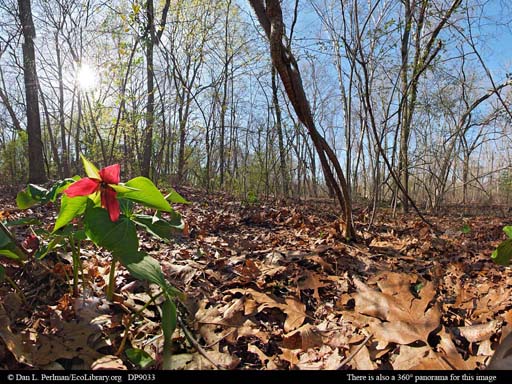Panorama: spring ephemeral flowers
| Title | Info |
|---|---|
| Common name | Red trillium |
| Scientific name | Trillium erectum |
| Taxonomic group | Liliaceae |
| Source | Dan L. Perlman |
| Ecosystems | Forests |
| Forests | Temperate deciduous forest |
| Ecological interactions | Competition |
| Change over time | Phenology |
| Lessons | Panoramas |
| Date | April 11, 2010 |
| Location | Newton,Massachusetts,USA,North America |

Panorama Viewing: Click the "View Panorama" button to see an interactive panorama. Click and drag your mouse in any direction to view other parts of the scene; press the Shift key to zoom in to see details and press Ctrl to zoom out.
We recommend using the Deval VR viewer for seeing panoramas that do NOT have sound and the QuickTime viewer for panoramas WITH sound.
Plants compete fiercely for light; trees put a great deal of energy into building trunks and branches in large part to get above their neighbors and receive more light. Herbs such as the red trillium, Trillium erectum, flowering in this image cannot compete effectively for light once trees have leafed out, nor can they flourish under the low-light conditions of the forest floor. Instead, these spring ephemerals leaf out and bloom much earlier than the trees above them so that they can receive the spring sunshine without interference. By the time the trees have leafed out and the canopy above has closed, the ephemerals will have completed most of their annual growth and reproduction.